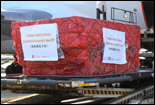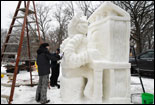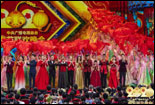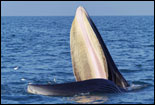Borba kineskih ekspedicijskih snaga u Burmi
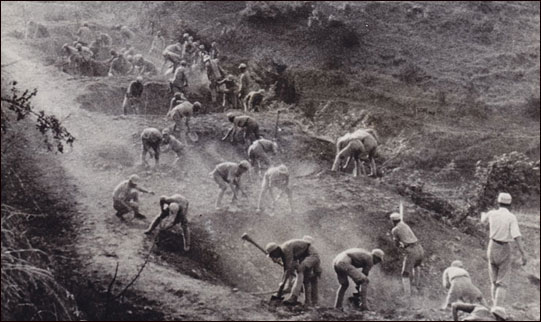
Foto:Arhiva
The Burma Road was an important transportation line for international supplies to and from China during the War of Resistance. Starting in Kunming in the east, the road extended westward to Lashio in Burma and was connected to the Rangoon-Mandalay Railroad.
After the outbreak of the Pacific War, China and Britain signed an agreement to jointly protect the Burma Road on December 23, 1941. The Chinese Expeditionary Force (CEF) entered Burma under the command of Tu Yu-ming, deputy commander of the First Route of the CEF in February 1942. The expeditionary force totaled over 100,000 men and consisted of ten divisions from the 5th, 6th, and 66th armies.
Burma was one of Japan's major strategic targets in the Pacific War. On January 20, 1942, the Japanese Army crossed into Burma through Mesok in west Thailand and took Rangoon on March 8.
While the Japanese were advancing northward along separate routes, the CEF arrived to the front just in time. In the battle for the defense of Taungoo from March 8 to 29, the Chinese Expeditionary Force eliminated a total of more than 5,000 enemy troops and provided strong support for the British Burma Army.
On April 2, 1942, Chiang Kai-shek decided that Luo Zhuoying should replace Wei Li-huang as commander-in-chief of the CEF, and that Luo Zhuoying and Chief of Staff of the China Theater Joseph W. Stilwell should take joint command of the CEF.
After occupying Taungoo, the Japanese 15th Army finalized its plan for taking Mandalay on April 3, and the Japanese main forces launched attacks along the Taungoo-Mandalay axis, coordinated with attacks on the eastern and western flanks.
On April 18, Stilwell and Luo Zhuoying ordered Chinese troops to give up the Pyinmana campaign, advance northward, and prepare for a campaign in Mandalay.
On the western route, the British Burma Army decided to give up Burma and retreat to India for defense. In the Yenangyaung campaign from April 14-19, the Chinese New 38th Division defeated the Japanese with a numerically inferior force and rescued the 1st Division of the British Burma Army that had been encircled in for days.
The Japanese took Hsipaw on April 28, Lashio on April 29, Bhamo on May 3, and finally Myitkyina on May 8, cutting off the CEF's route back to China.
After losing Lashio, Stilwell and Luo Zhuoying gave the order to abandon the Mandalay campaign, moving all units of the CEF westward to cross the Irrawaddy River and withdraw back to China along the Bhamo-Myitkyina Road.
After arriving in Mansi on May 18, the New 38th Division moved westward to Imphal, India. The headquarters of the 5th Army and its New 22nd Division arrived in Ledo, India on July 25. The 96th Division as well as one artillery unit and an engineer corps arrived in Jianchuan in western Yunnan on August 17.
The 200th Division reached Yunlong on June 29, despite the loss of its commander, Tai An-lan, who died in Maobang Village on the way. The main force of the 66th Army and the 6th Army also retreated back to China as separate units.
In nearly six months, the Chinese Expeditionary Force had marched over 1,500 kilometers while engaging the Japanese Army in Burma. Its efforts not only significantly contributed to the Global War against Fascism, but were also the first time Chinese troops had travelled to another country to fight the Japanese in coordination with other Allied forces.
· Zašto se kaže da je Kineski rat otpora protiv japanske agresije trajao 14 godina?
· Zašto je rat otpora nacionalna prekretnica od pada na novi ciklus?
· Zašto je KPK bila uporište kineskog ujedinjenog otpora?
· Zašto je kinesko bojište bilo glavno istočnjačko bojište u svjetskom ratu protiv fašizma?
· Koji je incident obilježio početak rata protiv otpora?
· Kako je osnovana marionetska država Mandžukuo?
· Što je obilježilo početak kineskog nacionalnog otpora?
· Kako je KPK upravljala ratom otpora?
· Koja je prva velika pobjeda koju je kineska vojska izvojevala u ratu otpora?
· Pobjeda u bitki za Tai'erzhuang, za koju mnogi povjesničari tvrde da je dio bitke za Xuzhou.
· Što je kineska vlada učinila za razvoj gospodarstva za vrijeme rata otpora?
· Što se događalo s kineskom diplomacijom nakon početka narodnog rata otpora?
· Kako su Kinezi u domovini sudjelovali i podržavali rat otpora?
· Kako su Kinezi izvan domovine pomagali u kineskom ratu otpora?
· Kako je ostatak svijeta podržao kineski rat otpora?
· Koje su nove taktike razvijene u kineskom gerilskom ratovanju protiv japanske agresije?
· Kampanja ofenzive sto pukovnija
· Koje je vrste biološkog oružja japanska vojska koristila u Kini?
· Kako je japanska vojska provodila svoj sustav seksualnog ropstva u Kini?
· Kako je Kina sudjelovanja u osnivanju Ujedinjenih naroda?
· KPK je pokrenula prvu stratešku protuofenzivu na kineskom bojištu
· Proslava japanske predaje i prihvaćanja u Kini
· Narodni tajvanski otpor protiv Japanaca i oporavak Tajvana
· Kako se sudilo japanskim ratnim zločinima?









